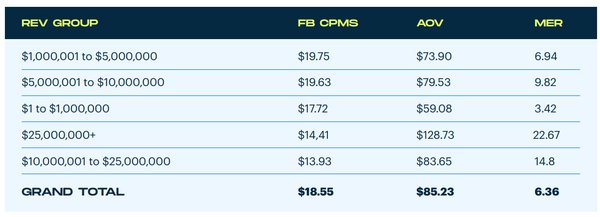
D2C ecommerce brands spent $29.9 million
on TikTok advertising in Q2 — up 60.3% versus this year’s first quarter, according to an analysis of data from 5,000-plus online stores that use the Triple Whale ecommerce analytics
tool.
In the first two quarters, ecommerce stores spent $48.4 million on TikTok advertising — which was up 231% versus the previous 181 days’ spending (chart
above).
Interestingly, it’s smaller etailers — those with annual sales of $1 million to $5 million — that are doing most to drive up TikTok spend.
"If
your store has a comparable revenue run rate, take note: It's time to get on TikTok while the needle's still moving in the upward direction, or before users are completely inundated with ads from new
brands," advises Triple Whale. TikTok “is no longer a channel serious paid media buyers can avoid without cutting into revenue and profit,” and it “may soon surpass Facebook as the
most valuable platform.”
advertisement
advertisement

All that said, Facebook is still by far the No. 1 investment channel for ecommerce advertisers, at $377 million in Q2 alone. However, that represented a relatively modest 5.6% increase
versus this year’s first quarter.
Google Ads also saw strong QoQ growth in Q2 (20.5%), and was the second-highest D2C channel by spend, at $118.9 million.
Snap
actually lost spend, declining 10.8% QoQ, to $2.9 million.
Overall ad spend across the 5,000 etailers analyzed rose 11% QoQ in Q2, to total $529.7 million. 
The top five highest-spending categories were health
and beauty ($141.9 million), home and garden ($58.3 million), food and beverages ($55.6 million) and jewelry and watches ($48.7 million).
Triple Whale’s analysis of Q2 also
revealed several other insights:
Spending efficiency varies widely on Facebook. CPMs vary by industry due to audience targeting, creative performance, niche and other factors.
Industries such as baby, books and collectibles have CPMs below $10, while health & beauty and digital products have CPMs over $14. However, given the amount of remarketing the latter
industries do, it makes sense, say the analysts. “Beauty brands go heavy on influencer marketing, and awareness campaigns don’t bring in a huge return on paid social. Spending more on the
customers you’ve already acquired may increase CPMs, but it’s also going to increase revenue and ROAS [return on advertising spend].”
Higher sales enable higher marketing
efficiencies, and efficiency in turn drives volume. Stores with $25 million or more in annual sales have outstanding average order values, and the highest marketing efficiency ratio/MER
(overall return on ad spend across all of a brand’s platforms, or total sales divided by total ad spend).
“While AOV doesn’t necessarily correlate to strong sales, it
does seem to drive strong efficiency across the marketing ecosystem,” note the analysts. “But it’s not the end-all-be-all of revenue metrics. MER is the name of the game.The more
efficient you can make your spend at scale, the more revenue and profit you can drive.”
